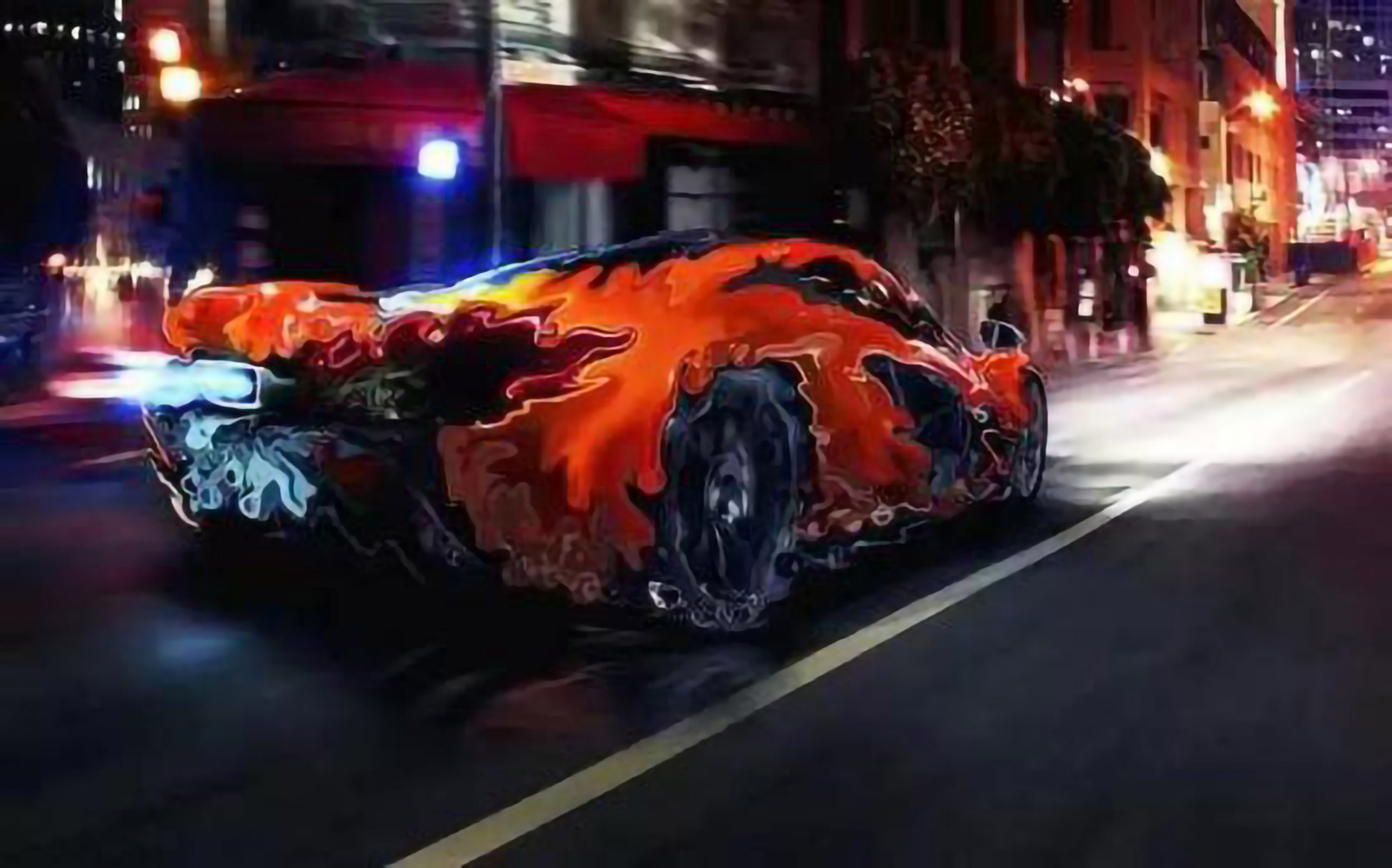Yang Xiaobin
The threat of global warming is looming day by day. Recently, as WMO declared, the average temperature of the world in the first half of 2015 has reached the new high. On July 20, the surface temperature in Volcanoland, Turpan, Xinjiang, China reached the record 73 °C!……But before such news were spread out, Yang Ermin launched his “Self-Combustive Environment” (Ziran Huanjing) Art Project, intended to examine the theme of warming of the “natural environment” (ziran huanjing) in the global scale through the image of burning cars. Here, “nature” (ziran) becomes “self-combustive” (ziran) during the “progressive” process of anti-natural industry and technology: the self-combustive formations appear from the burning automobiles that produce all kinds of pollutions. On the one hand, cars wrapped with stickers of flames are more than gorgeous; and on the other hand, the swinging images of fire create the visual effect of melting metal that can hardly be self-supportive. The self-combustive car body looks intoxicated in movement: cold rationality of industrial civilization is undermined by dangling and trembling fire. This is not “driving under the influence of alcohol”; rather, the car itself has become an unstable and unreliable product of modern technology.
The idea of Yang’s work is not one-dimensional. Even from the visual appearance, another angle will show that the burning car body looks also passionate and energetic. This artistic act not only impresses people with the heat that scorches and melts the world in the form of wind-fire (fenghuo) but also becomes an eye-catching warning in the manner of beacon fire (fenghuo) that reminds people of the crisis of global warming. As long as cars and fires are connected in a natural/self-combustive way, we are compelled to be aware of and sensitive to the unspeakable association between the splendid civilization and the potential disaster brought by such civilization.
Thus, self-combustion can be understood as a serious symptom of nature’s disease. According to the psychoanalytic theory, we should be indentified with our symptom, or even enjoy our symptom, in order to eliminate our inner illness and to avoid being crushed by it. Yang’s “Self-Combustive Environment” Art Project preoccupies and exhibits the symptom of the illness of global warming, and urges us to reflect on how to respond to the challenge of the crisis-ridden world under the natural/self-combustive status in which pain (hot burning) and pleasure (cool car) are intertwined.
In any case, from the perspective of art history or cultural history, Yang’s “Self-Combustive Environment” Art Project is a re-creation of the mythical image of “hot wheel.” The “hot wheel” owned by Nezha (the famous “Third Lotus Prince”) represents boundless magic power. It originates from the Buddhist symbol that indicates the ability to destroy all human evils and crush mountains and rocks, just like there are patterns of battle carriages on Buddha’s feet soles that can defeat enemies and demons. Doubtless, the destructive power and process are linked to catastrophe. The motor vehicle, as an instrument of modern transportation, has equally boundless “magic power.” Now it even further resembles the prototype of the “hot wheel” – the Fire Phoenix – relying on the bestowment of nature (as well as the barbarian natural force), which we cherish and fear at the same time. When the Other of civilization becomes unreasonably self‐righteous, the natural grandeur turns into the self-combustive catastrophe.
As a contemporary art work with postmodern tint, Yang’s show adopts classical cultural elements and endows them with different and multiple implications. “Self-Combustive Environment” Art Project does not construct a black-and-white, morally definitive symbolic pattern, but interrogates the simultaneously ungraspable and heart-wrenching human destiny through interactions and conversions between the beautiful and the catastrophic.


Leave a Reply
You must be logged in to post a comment.